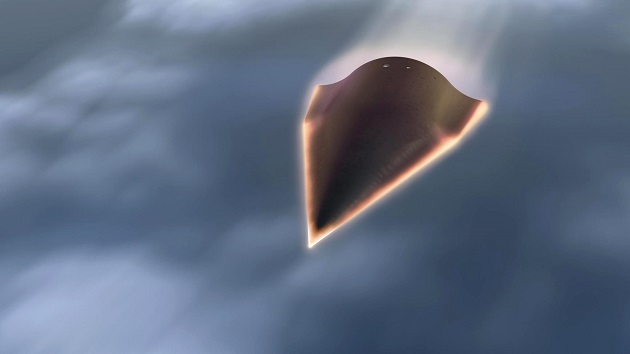Researchers replicated the hypersonic flow conditions of a compression ramp flow by means of Direct Numerical Simulation. The simulation yielded an abundance of additional data, which can be used to better understand the phenomena that occur surrounding vehicles traveling at hypersonic speeds.
Data from experiments are somewhat limited—for example, taken from pressure probes at a few locations on a test object. When we run a numerical simulation, we acquire information—such as pressure, temperature, density, and fluid velocity—about the entire flow field including the vehicle surfaces. This can help explain some of the things that experimentalists have found but couldn’t quite explain because of a lack of data.
The study simulated a control surface at the end of a wing used to maneuver an aircraft. In this case, it simulated a flat plate including the leading edge, with a 35-degree compression ramp configuration that had previously been experimentally tested in the Langley hypersonic wind tunnel.
Hypersonic flows are complex. The high energy of the flow results in substantial pressure and heat loads which—in addition to shocks—creates challenging problems both experimentally and numerically. The flow configuration considered in this study involves a super-critical ramp angle resulting in a separation bubble that is inherently unsteady. Accurately capturing this phenomenon is complex as it is highly susceptible to its environment, such as acoustic noise and turbulence. Furthermore, the thinner the panels on the exterior of a vehicle are—typically motivated by weight optimizations—the more likely they are to start deviating from a perfectly rigid behavior, which results in an interaction with the flow and can create additional complexity of the fluid-structural system.
And, in addition to the contributors to turbulence in a natural environment, the wind tunnel itself causes acoustic disturbances which can trigger unsteady fluid motions that lead to turbulence.
The discrepancy that was found between the experimental data and a previous 2-D simulation was due to the lack of acoustic radiation generated by the walls of the wind tunnel. In this 3-D simulation, they replicated the wind tunnel experiment under both quiet and noisy conditions—noisy by introducing freestream disturbances at the far-field boundary of the computational domain.
The impact of acoustic disturbance has been studied before, but not in the context of this hypersonic ramp configuration. they were able to accurately prescribe acoustic freestream perturbations. What they observed adds to the fundamental understanding of the unsteady flow phenomena observed in the experiments. The simulation continues to run on Frontera and is not finished yet. It’s very labor-intensive and time-consuming. It’s continuing to acquire more data that will contribute more information to help us understand the complexities of hypersonic flow.

